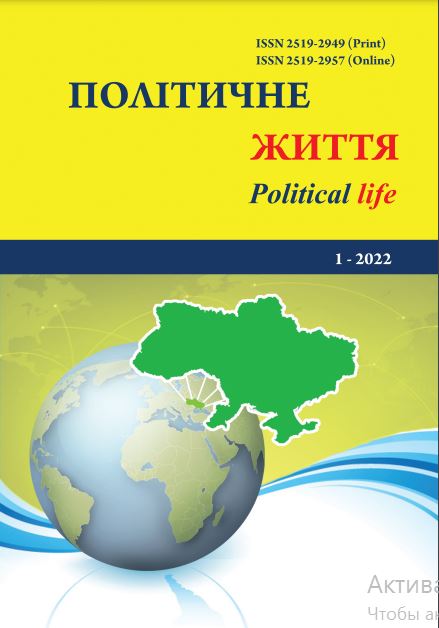Concept and implementation of directed migration
DOI:
https://doi.org/10.31558/2519-2949.2022.1.14Keywords:
directed migration; migration policy; hybrid conflict; theories of migration; the means of mass information and communicationAbstract
The article studies the ways political actors use to direct the migration processes for their further use as a foreign policy instrument, including the ones that are used in the hybrid war context. The author of the article introduces the directed migration concept and substantiates the difference between directed migration and migration policy. The main differences lie in subjectivity, political purpose, the degree of openness, the existence of legislation framework. The article defines the characteristics of the migration processes that are affected by the political actors: number of migrants and their qualitative composition, the directions of their movement, the migrants’ behaviour in the new place of living. The author states these characteristics are compatible with the three stages of migration process. Among the present theories and theoretical models the author identifies the ones that form the framework for directing the migration: the gravity theory of migration, the Push-Pull theoretical model, the theory of migration networks. Within the bounds of every theory the author gives the examples of activities the political actor can resort to in order to direct the migration. The author states that the political actor can combine the migration directing activities from different theories and theoretical models. On the other hand it can be sufficient to direct migration only at certain stages of migration processes. As the separate issue the article explores the role of the modern means of mass information and communication as well as the new media in directing the migration. The author concluded that political actor has to control and influence migration in a hidden way to use the directed migration as an effective instrument of international policy. So it shouldn’t betray itself or its strategic goals. Alternatively, the use of measures and means of influence can be explained with the plausible motives.
References
Glushchenko G. Migratsija I razvitije. М.: Ekonomika, 2009. 454 s.
Zakharov А. Kharakteristika ekologicheskoj vojny kak sovremennogo globalnogo vyzova chelovechestvu. Politicheskije nauki i pravo. Vestnik TGU, 2015. № 1(1), s. 20-24.
Iontsev V. Klassifikatsija osnovnykh nauchnykh podhodov v izuchenii migratsii naselenija // Teorija i praktika issledovanija. Serija «Migratsija naselenija». М., 2001. 34 s.
Iontsev V. Napravlenija migratsionnoj politiki razvitykh kapitalisticheskikh stran. М., 1980.
Malynovska О. Migratsijna polityka: globalnyj context ta ukrajinski realii. Kyiv: NISD, 2018. 472 s.
Rybakovskij L. Migratsija naselenija: prognozy, factory, politika. М.: Nauka, 1987. 114 s.
GRID New displacements by conflict and disaster, (2020). URL: https://www.internaldisplacement.org/sites/default/files/publications/documents/2020-IDMC-GRID.pdf (data zvernennia: 14.04.2021)
Lee E. A theory of migration. Demography, 1966. № 3 (1), p. 47-57.
Massey D., Arango J., Hugo G., Kouaouci A., Pellegrino A., Taylor J. Theories of international migration: A review and appraisal. Population and Development Review, 1993. № 19 (3). p. 431 – 466.
Portes A., Bach R. Latin Journey: Cuban and Mexican Immigrants in the United States. Berkeley, CA.: University of California Press, 1985. 432 p.
Stouffer S. Intervening Opportunities: A Theory Relating to Mobility and Distance. American Sociological Review, 1940. № 5 (6). p. 845 – 867.
Zipf G. Human behavior and the principle of the least effort. Massachusetts: Addison-Wensley Press, 1949. 573 p.

